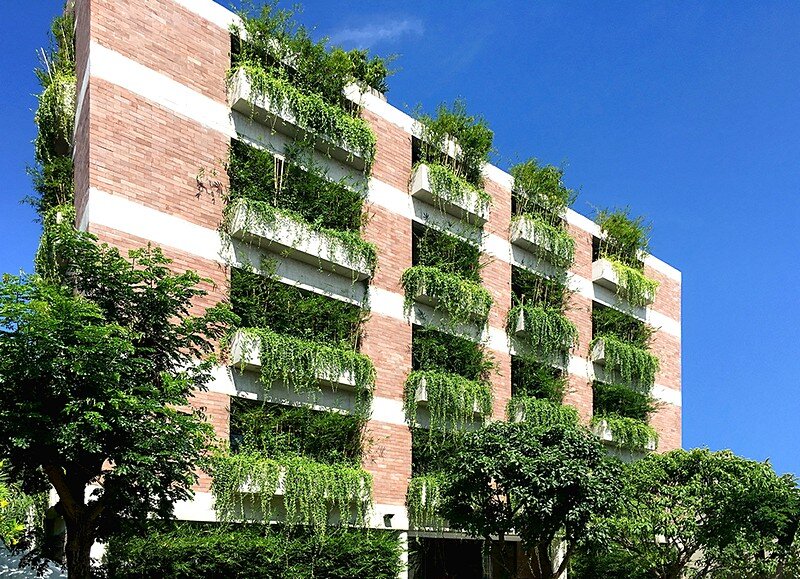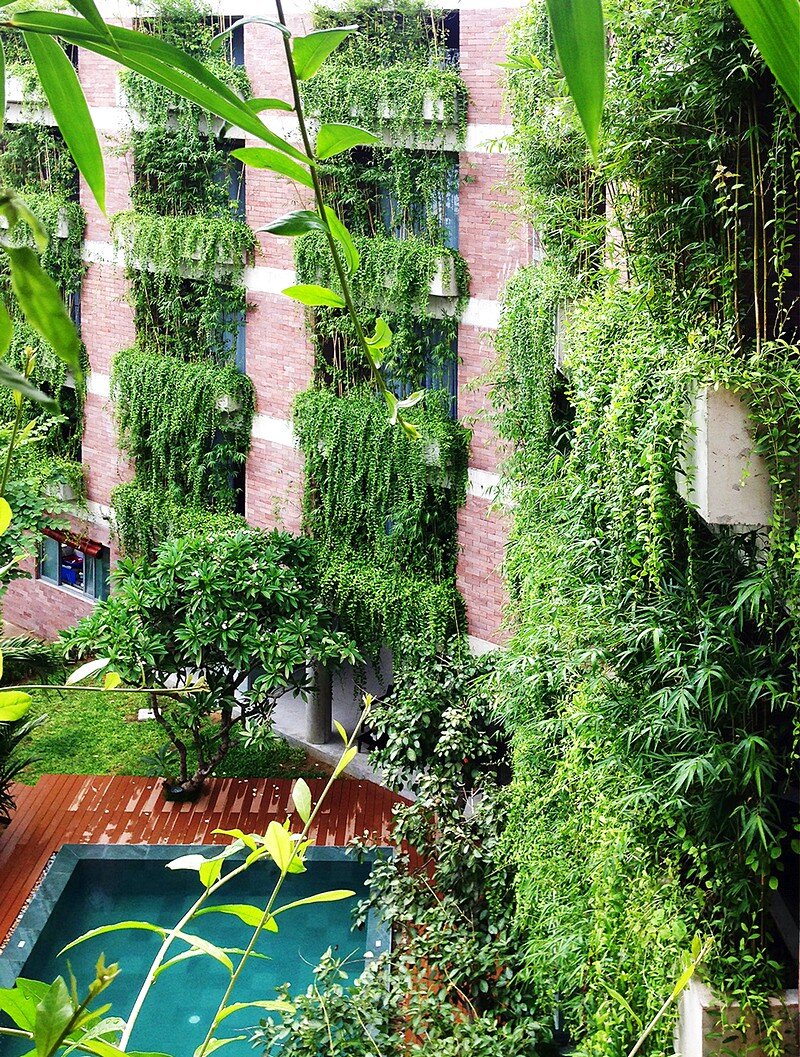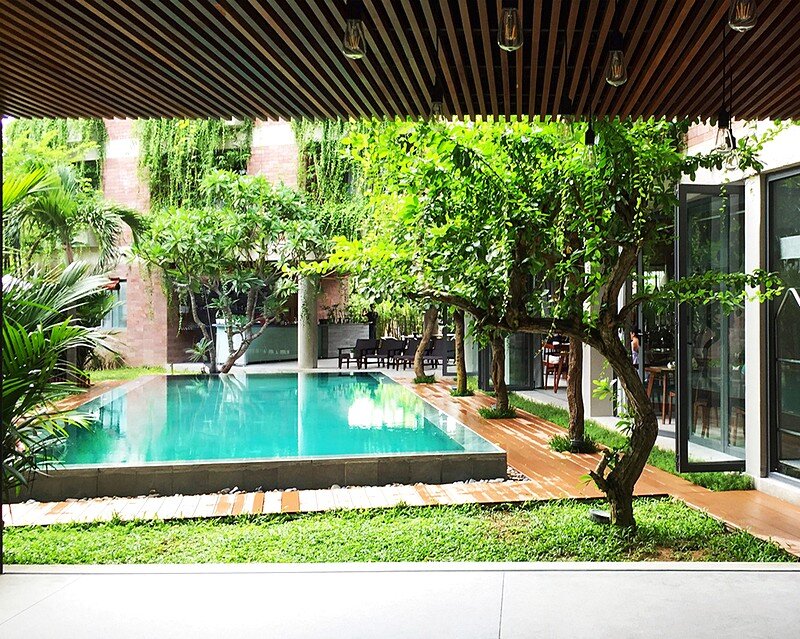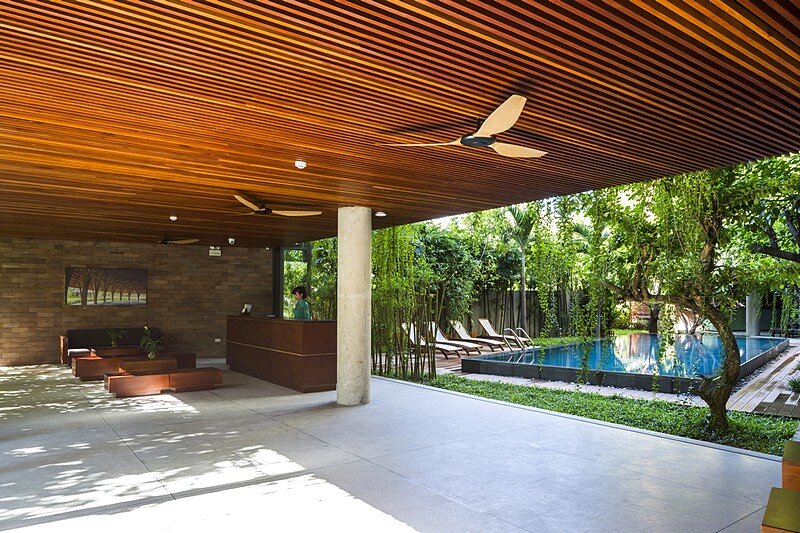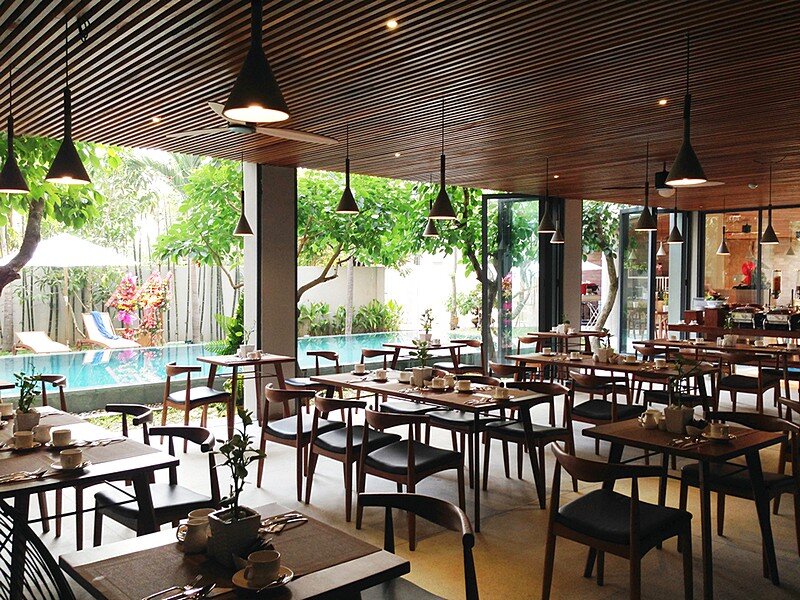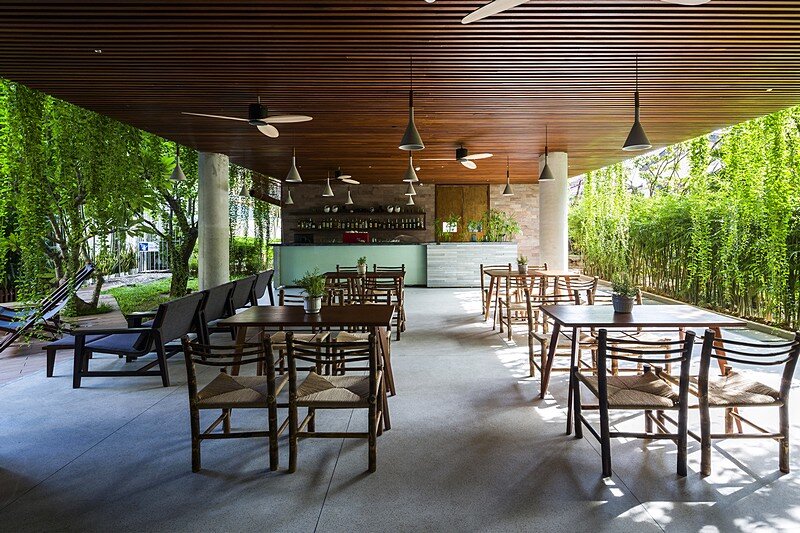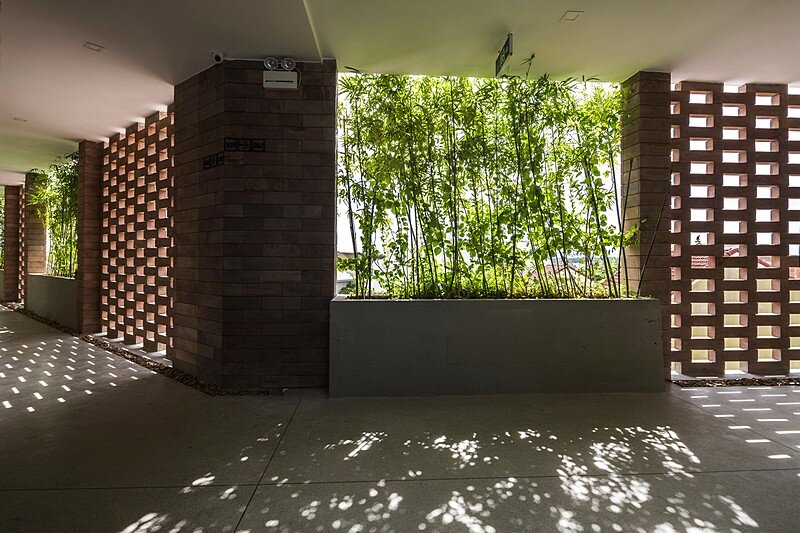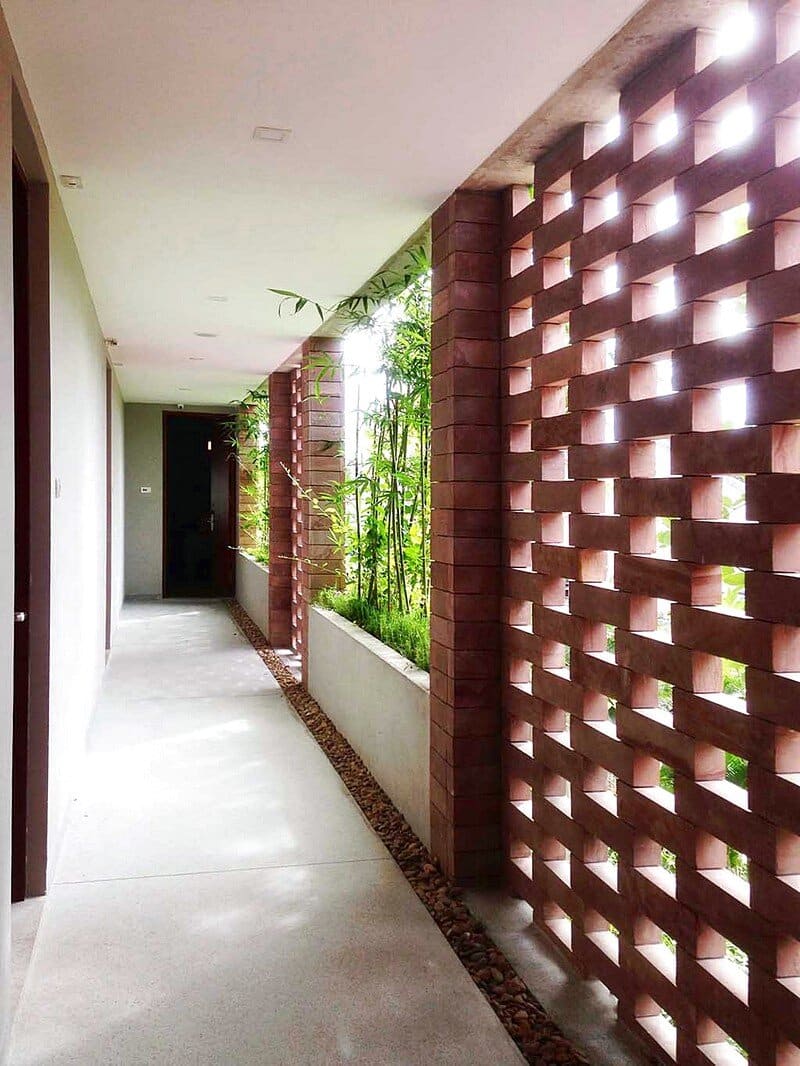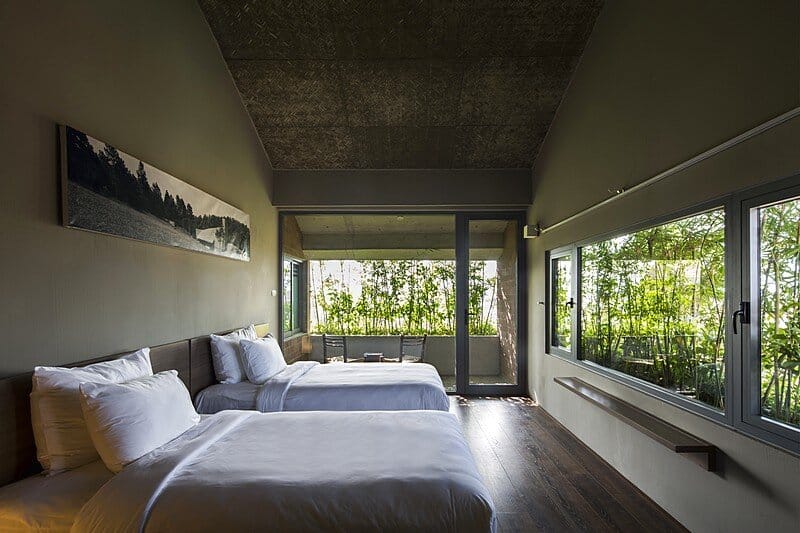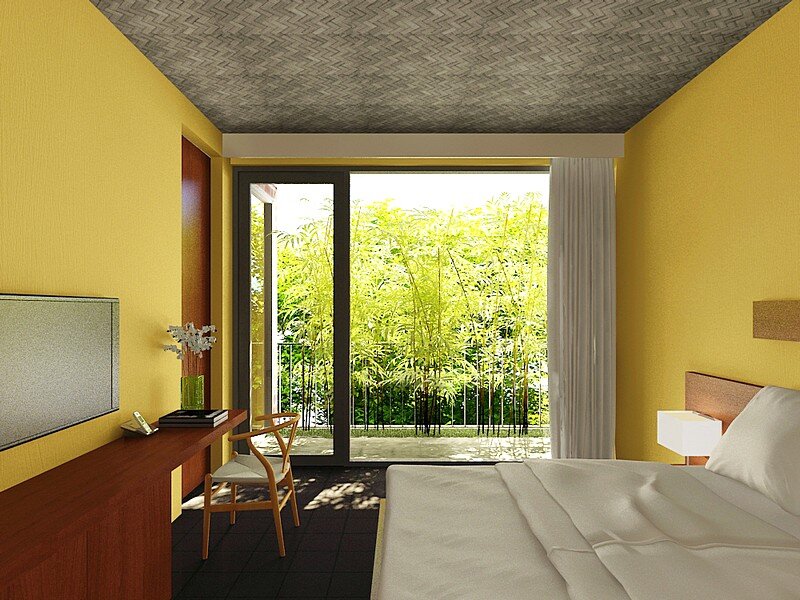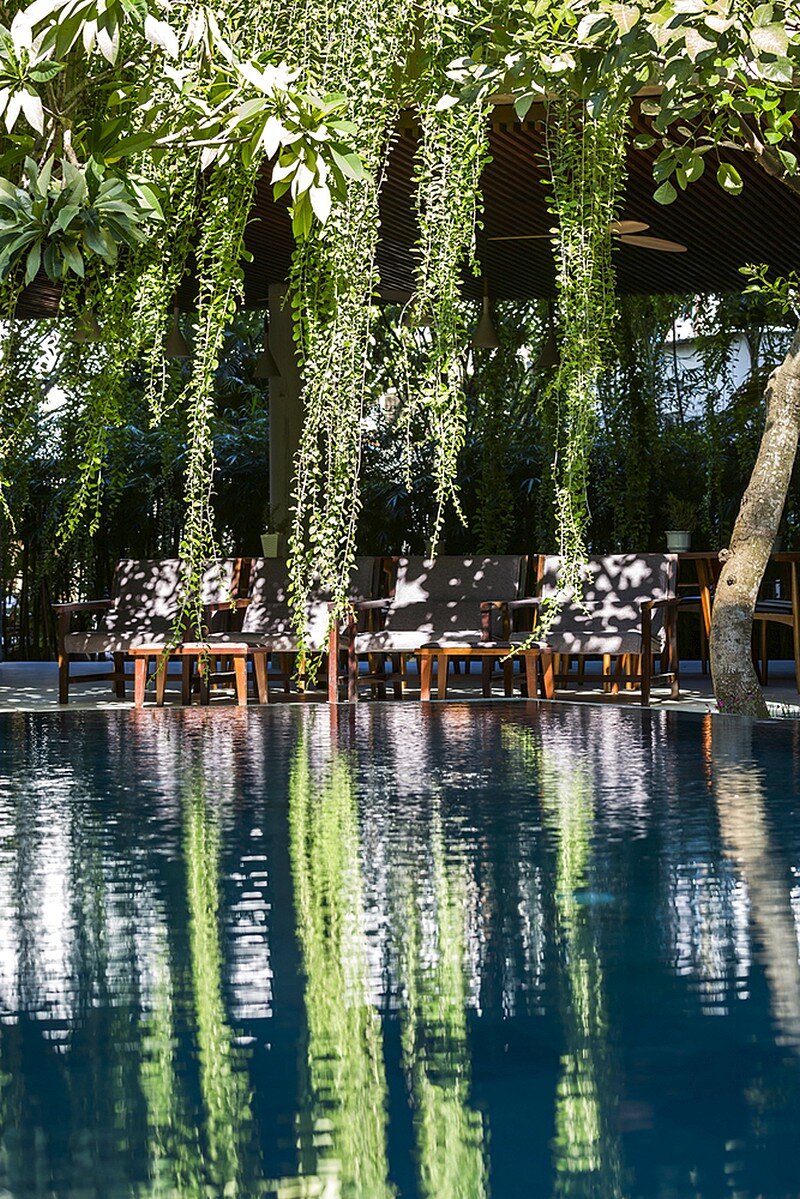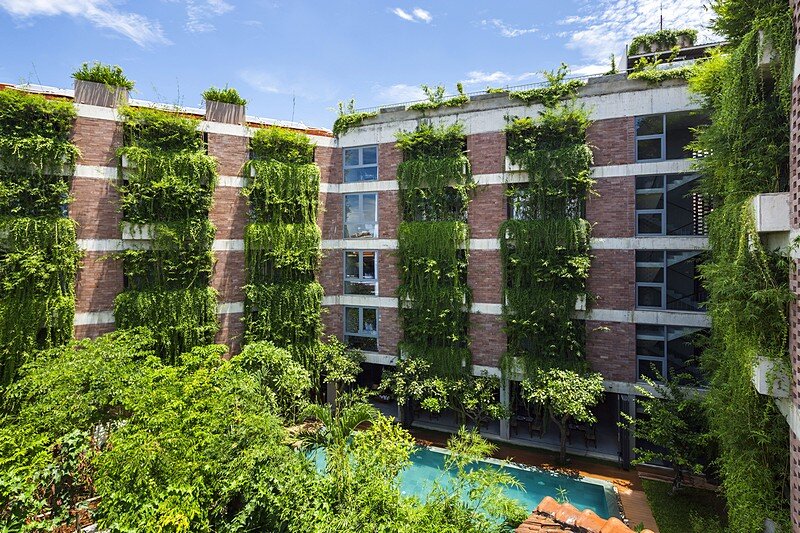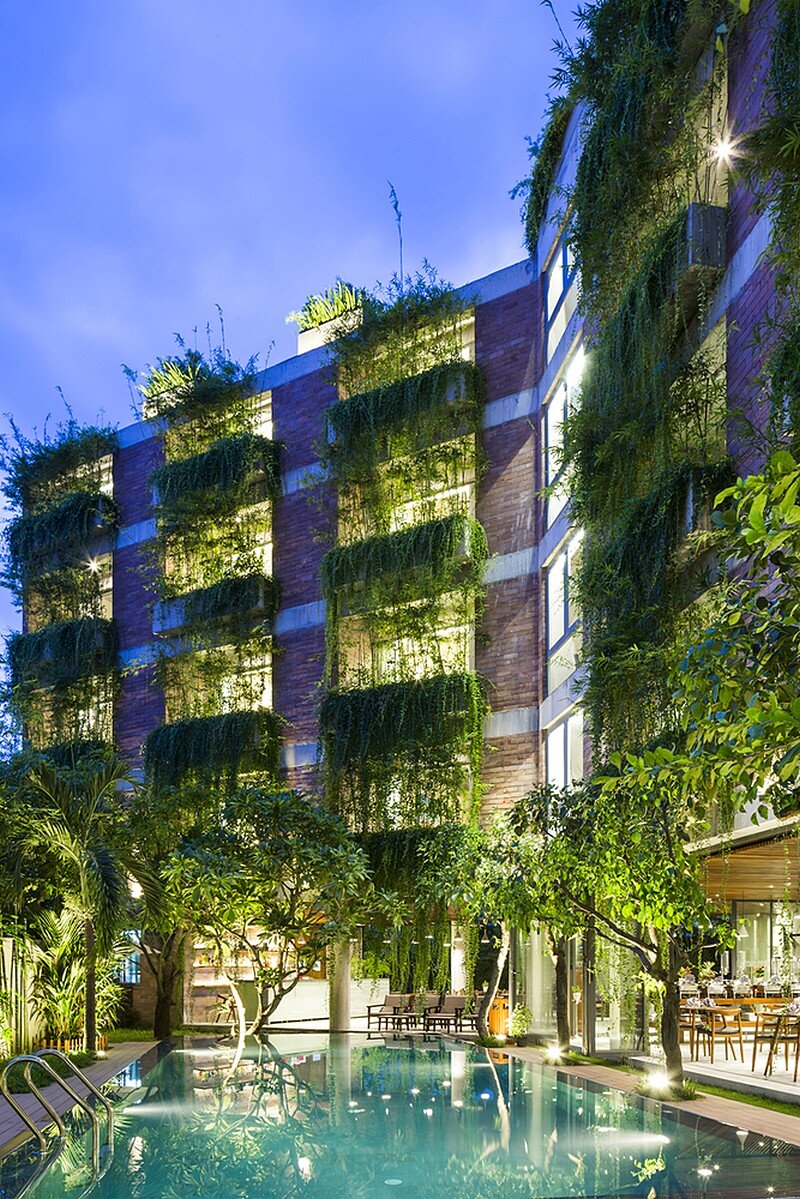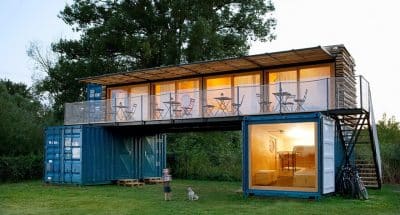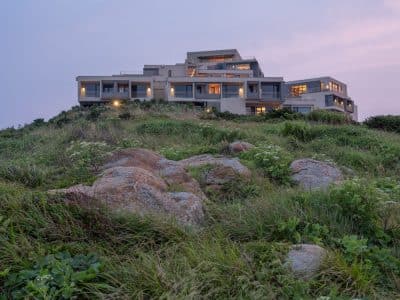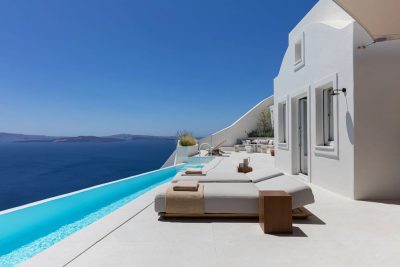Project: Atlas Hotel
Architects: Vo Trong Nghia Architects
Status: Completed in 2016.04
Location: 30 Dao Duy Tu, Hoi An, Quang Nam, Vietnam
Site Area: 1,348 sqm
GFA: 3,115 sqm
Design Credit: Vo Trong Nghia, Tran Thi Hang, Le Thanh Tung, Pham Huu Hoang, Le Duc Toanv Pham Khac Hung, Nguyen Thi Ha Vi, Lê Thanh Tan, Nguyen Ngoc Thien Chuong
Photography: Hiroyuki Oki
Atlas Hotel was completed in 2016 by the Vietnamese studio Vo Trong Nghia Architects. Located in Hoi An Old Town, the hotel provides 48 guest rooms including all kinds of resort services such as restaurant and café, healthcare center with spa, foot massage, gym and swimming pool. By installing more than 100 cantilevering concrete planters, the greenery appears at all the façades balconies, along the narrow corridors and rooftop as well.
Project description: Atlas Hotel Hoi An is located in Hoi An’s “Old Town; an area which has rapidly grown since it was officially named by UNESCO as a World Heritage Site. Recently, most of the ancient houses have been converted into shops and restaurants that serve the daily influx of tourism.
The neighborhood is well known for its beautiful tiled-roofscape and its internal courtyards that provide a layered spatial quality between the inner and outer spaces. This quality has been slowly eroded due to chaotic commercial flow. As a consequence, Old Town has lost its charm of a calm and peaceful lifestyle.
Located in an irregular plot of land, the design approach of Atlas Hotel is to turn this constrain into its unique character. The linear layout is divided into several internal courtyards, and by lifting the building above the site, it completely frees the ground floor to create an inter-connected network of courtyards. This spatial quality reflects the dynamism of the new Hoi An but also retains the charm of the Old Town.
The five story hotel includes 48 guest rooms as well as various leisure functions such as restaurant, café, rooftop bar, spa, gym and swimming pool. Due to the complexity of the site, each guest room is shorter and wider than typical hotel rooms. Rather than a problem, this presented an opportunity for the rooms to have greater access to greenery not only from the bedroom but also from the bathroom.
The building façade is clad with locally-sourced sandstone pieces used in combination with an exposed concrete slab and a series of planters along the corridors. The planters are arranged along the entire façade of the hotel not only provides solar shading but also allows cooler air to ventilate the spaces. In addition, the perforated stone walls admit daylight without blocking air flow. This scheme allows the place to be naturally ventilated to minimise the use of air conditioner.
The use of these green and natural elements embodies the particular interest of the office and the House for Trees concept: to integrate greenery into design as a way to rejuvenate urban areas and to contribute to societal improvement. At its core, Atlas Hotel reconnects man with nature.
Thank you for reading this article!

